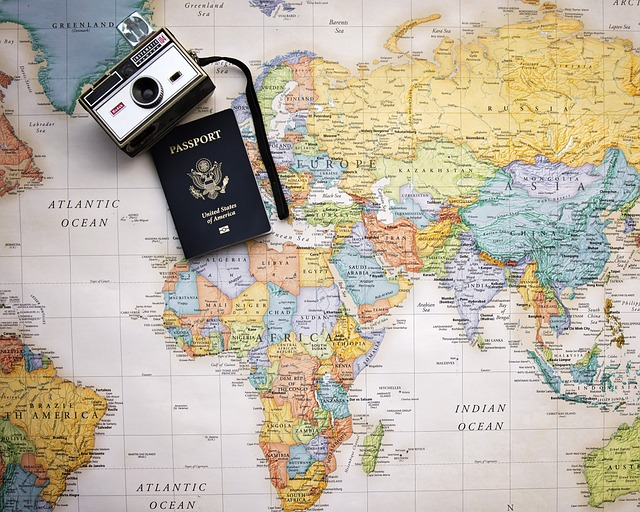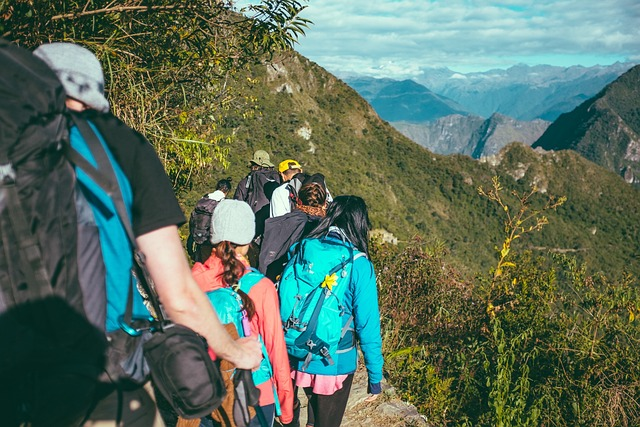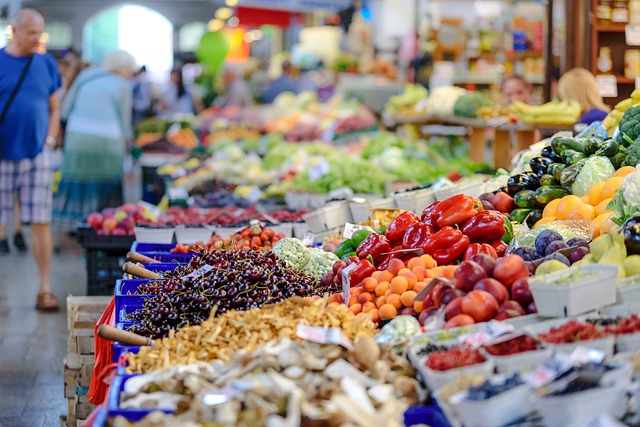Eco Friendly Travel: A Comprehensive Guide for Sustainable Travelers
Are you interested in reducing your impact on the environment while still having a meaningful travel experience? If so, this comprehensive guide to eco-friendly travel will equip you with all the information and resources you need. With detailed advice on how to travel responsibly, sustainable options for accommodation and transportation, tips on how to reduce your carbon footprint, and much more, you’ll have the knowledge and tools necessary to make smart and sustainable choices every step of the way.
Whether it’s reducing waste, supporting local economies, or simply enjoying a more enriching experience, eco-friendly travel will help you achieve your goals and make a positive difference for our world. So let’s get started!
What Is Eco-Friendly Travel?
Eco-friendly travel, also known as green travel or sustainable tourism, is a conscious approach to exploring the world that emphasizes preserving natural resources, protecting local communities and reducing carbon emissions. It’s an alternative to mass tourism that seeks to create positive benefits for both travelers and the environment.
Sustainable travel is essential in our fight against climate change – it reduces global impact while supporting local economies. But aviation remains one of the most polluting forms of transport, emitting harmful gases into the atmosphere despite efforts being made to reduce them.
Ecotourism focuses on responsible visits to natural areas with an aim of promoting wildlife conservation and sustainability. It encourages travelers to be mindful of their impact on nature and respect local cultures too! Costa Rica has become a popular destination for this type of tourism due to its commitment towards more sustainable practices – something which The Global Sustainable Tourism Council are also working hard at encouraging across airports, hotels, tour operators etc.
Unsustainable tourism can cause significant damage if not managed properly, so here are some tips for responsible travelers: reduce single-use plastics; invest in carbon offset programs; shop locally; eat seasonal organic foods; follow eco-friendly hiking tips such as leaving no trace & respecting wildlife. By making these small changes we can make a big difference in preserving our planet for future generations!
How to Get Started with Eco-Friendly Travel
The world is in a state of environmental emergency, and it’s up to travelers to do their part in reducing the damage. From selecting sustainable transportation to backing local communities, there are plenty of ways for globetrotters to lessen their ecological footprint while on the go. Public transport is an essential element of eco-friendly travel – so whenever possible, opt for public transit instead! Not only does this cut down on carbon emissions, but also helps out your destination’s economy. Tour operators are another great way to explore responsibly; many offer a range of local options that let you discover your destination sustainably. Supporting local businesses is yet another way to make your travels more sustainable – buy locally produced products, stay at locally owned accommodations and hire service providers from the area too! Eating seasonally organic food can also help support the community and reduce carbon emissions. When booking accommodation, look for hotels that follow LEED guidelines or have been certified by third parties as being green-minded – Whitepod uses wood stoves and LED bulbs while Park Hyatt Maldives Hadahaa has solar power and wind turbines as examples! Finally, offsetting your carbon footprint by investing in carbon offset programs is one last step towards sustainability; The Global Sustainable Tourism Council (GSTC) provides a list of certified organizations who do this.
Choose Sustainable Accommodations
Choosing sustainable accommodations is an important part of eco-friendly travel. Accommodation choices can be the difference between a trip that supports local communities, and one that exploits them. When looking for a place to stay, travelers should look for accommodations that use renewable energy, such as solar power, and water/energy efficient technologies. They should also support local businesses, such as guesthouses, homestays and small-scale accommodations, which usually employ locals and use locally sourced materials.
Global platforms such as Workaway, Worldpackers, WWOOF, and Trusted Housesitters offer travelers the opportunity to travel slow, ethical and sustainable. These platforms link people in need of someone to look after their home/pets with travelers/pet lovers, giving travelers the opportunity to immerse themselves in a destination and gain valuable insights into local culture and lifestyle.
In order to reduce their environmental footprint when staying in an accommodation, travelers should stay in low impact accommodation, such as smaller, more basic accommodation or higher-end properties using renewable energy and water/energy efficient technologies. They should also look for hotels that follow LEED guidelines from the U.S. Green Building Council or that are certified by third parties as being sustainable.
Use Sustainable Transportation
Sustainable transportation is a key part of eco-friendly travel. Whenever possible, travelers should opt for public transport such as trains, buses and ferries to reduce their carbon emissions, support the local economy and travel responsibly.
Air travel is the least efficient mode of transportation with high carbon emissions. When booking flights, travelers should choose airlines that are committed to reducing their environmental impact and invest in carbon reduction projects to offset their footprint.
When taking a safari, be mindful of your impact on wild animals – choose tour operators that follow sustainable practices and respect wildlife!
Finally, become a green traveler by choosing green airports and airlines like Air France (which has invested heavily in green airports) or Virgin America (offering options like carbon offsets and energy efficient lighting).
Pack Light and Reuse Items
Packing light is a must for sustainable travel. But why? Carrying too many items increases energy consumption and creates more waste – so before you jet off, unplug all electrical devices and switch to energy efficient light bulbs.
What should you bring with you? Reusable bottles, cutlery and containers; comfortable walking shoes made from natural materials like cotton, linen or wool; a refillable water bottle instead of single-use plastics; plus a reusable bag or backpack. This not only reduces waste, but also encourages travelers to buy fewer souvenirs and pack lighter! Before leaving home, consider donating or selling any unused items.
Packing light has its perks: it’s better for the environment by reducing landfill burden and carbon emissions from transportation. Plus it helps travelers focus on experiences rather than buying souvenirs!
Tips for Sustainable Eating While Traveling
Eco-friendly travel starts with eating sustainably while on the road. Sustainable eating means consuming food that is produced in a way that minimizes environmental damage and takes into account the wellbeing of the local population. It is important for travelers to be mindful of their food choices while traveling in order to ensure they are making the most eco-friendly choices available.
There are many ways travelers can ensure they are eating sustainably while on the road. Taking a cooking class is a great way to learn how to prepare local dishes and support the local economy. Eating vegetarian or vegan meals eliminates the environmental impact of animal agriculture, and opting for chicken or sustainably sourced seafood instead of red meat is another great option. Bringing a reusable shopping bag when visiting local markets is a must, and travelers should look for cloth bags made from sustainable materials such as organic cotton or hemp.
A menstrual cup is an eco-friendly alternative to traditional sanitary solutions. Menstrual cups are reusable and produce no waste, making them a great option for travelers. They are also lightweight and easy to pack.
Shop Locally
Shopping locally is an important part of sustainable travel. By shopping locally, travelers can support the local economy, reduce plastic bottle waste, and experience the true culture of the region. When shopping at local markets, travelers should bring a reusable shopping bag and look for items made from natural materials such as cotton or bamboo.
There are many activities travelers can look for when visiting a new place that give back to the local population. Community-run tours, volunteering at local schools, and buying handmade products all support local economies. Additionally, buying local produce reduces the distance travelled for food production and distribution, thus reducing carbon emissions.
Eat Seasonal, Organic Foods
Eating seasonal and organic foods while travelling is important for a number of reasons. Buying organic produce helps to reduce pollution, conserve water, use less energy, and eat clean, healthy foods. Additionally, bringing your own items such as water bottles, cutlery, and reusable bags can reduce single-use consumption.
Many tour companies, such as Intrepid Travel, are now working to reduce plastic bottle waste by working with hotels in Asia to install water filters. There are also bottles that can filter and purify water, such as the Lifestraw Go or GRAYL.
Reduce Your Meat Consumption
Reducing meat consumption – is it really that important for sustainable travel? Absolutely! Animal agriculture has a huge impact on global warming, and cutting down our meat consumption can help reduce carbon emissions. Instead of chowing down on burgers and steaks, why not try some delicious tofu, nuts or legumes? And if you’re looking to further reduce your carbon footprint while travelling, why not switch to laundry soap bars instead of using hotel washing machines or invest in carbon offset programs?
Eco-Friendly Hiking Tips
As a sustainable traveler, have you ever considered the impact your journey has on the environment? Eco-friendly hiking is a crucial part of sustainable travel – it allows us to explore nature without leaving a lasting footprint. To ensure we are respecting our natural surroundings, here are some simple steps to follow.
Stay on marked paths and trails like a well-worn path; keep your distance from wildlife as if they were old friends; avoid harming native flora like an unwelcome guest. When visiting any natural area, act responsibly and minimize your impact by following visitor guidelines and adhering to the Leave No Trace Principles. Lastly, reduce wood usage for fireplaces and campfires – this helps protect precious resources!
So why not take these small steps towards eco-friendly hiking? After all, every little bit counts!
Leave No Trace
Leave no trace is an important principle for eco-friendly hiking. This means that travelers should not take anything from the natural environment and should leave it as they found it, or better. It is important to stay on marked paths and trails, as this helps protect native flora and fauna. Going off the beaten path while hiking can lead to trampling on protected or endangered plants.
Backroads practices a number of principles to ensure a positive impact while traveling, such as Leave No Trace. This includes packing it in, packing it out and leaving no trace of your camping trip. Additionally, travelers should respect the local culture and leave places as they found them. They should also respect local people and use local languages when possible.
Respect Wildlife
When encountering wildlife, never feed or touch them. The best way to experience wild animals is to observe them in their natural habitat – without disturbing them. But what if you’re unfamiliar with local wildlife? It’s best to ask a local guide for advice. Avoid activities like elephant rides that can hurt animals and when snorkeling or scuba diving, don’t touch or step on coral and stir up sediment. To ensure the best tour experience, ask your tour operators if they use chumming to attract marine life.
Choose Sustainable Outdoor Gear
Sustainable outdoor gear is an essential part of eco-friendly travel. Think clothing, tools and camping equipment – all designed to be both environmentally friendly and durable. You can pick from a range of sustainable outdoor gear certified by the Global Sustainable Tourism Council, Green Globe or other organizations.
When selecting your sustainable outdoor gear, look for items made from renewable materials like bamboo or hemp. Also consider energy consumption and whether the item is made with recycled materials. By choosing sustainable outdoor gear, you’re not only travelling responsibly, but also helping reduce unsustainable tourism’s impacts on our planet!
Shopping Responsibly While Traveling
Shopping responsibly while traveling is an important part of eco-friendly travel and can help travelers reduce their environmental impact while supporting local communities. Shopping responsibly means choosing to purchase items that are made sustainably and ethically, with consideration for the local economy, the environment, and the culture of the places you visit. It also means reducing plastic waste and avoiding single-use plastics when possible. By shopping responsibly, travelers can ensure their trip has a positive impact on their destination.
When shopping, travelers should take into consideration the environmental impact of their purchases and strive to reduce their carbon footprint. This can be done by avoiding single-use plastics and bringing reusable bags or containers when shopping. Additionally, travelers should seek out local businesses and entrepreneurs, as this will support the local economy while preserving the culture of a place. Furthermore, it is important to avoid purchasing souvenirs made from endangered plants and animals, or from unsustainable hardwoods or ancient artifacts.
By making more conscious decisions when shopping, travelers can help trigger larger operational changes regarding plastic waste. For example, asking the bartender to skip the straw or choosing to dine in rather than take out can help reduce plastic waste. Additionally, switching to compostable toothbrushes, toothpicks, and bamboo straws can help reduce the amount of plastic waste associated with dental hygiene.
Buy Local Products
When travelling, it’s essential to buy local products. Doing so helps the local economy, reduces plastic waste and preserves culture. But what should you look out for? Seek out markets, artisans and souvenir shops with locally made products. Plus, tour operators and restaurants prioritize local suppliers. To gain a deeper understanding of the culture you’re visiting, take time to learn about its customs and engage with locals – creating meaningful connections in the process!
Support Fair Trade Businesses
When travelling, it’s essential to support fair trade businesses. Why? To reduce environmental impact and promote ethical practices, of course! Fair trade is an international movement that works to ensure a minimum wage and safe working conditions for employees, as well as a fair price for producers.
But how can travelers show their support? Look out for certifications like EarthCheck (Australia), Green Globe, Rainforest Alliance (Latin America, Caribbean) or the Green Tourism Business Scheme (UK). These indicate that the business is operating in a responsible manner.
Want to go one step further? Sign up with TCT’s affiliate program – it allows you to donate directly to local projects and community development initiatives!
Avoid Single-Use Plastics
When travelling, it’s like a game of chess – you must think ahead and reduce plastic waste by avoiding single-use plastics. But what are these pesky pieces? Single-use plastics, such as plastic straws and bags, are the most common forms of pollution that can have a devastating environmental impact. To make sure your moves don’t leave behind any mess, travelers should bring their own reusable containers, bags and water bottles when shopping. Additionally, seek out vendors that offer biodegradable alternatives to single-use plastics.
The COVID-19 pandemic has caused an increase in the use of single-use plastics for hygiene purposes – from plastic gloves to takeout containers and packing bubbles to grocery bags. To combat this reliance on disposable items, opt for dine-in rather than takeout; bring your own reusable utensils; ask the bartender to skip the straw; switch to compostable toothbrushes and toothpicks or bamboo straws instead of plastic ones.
By taking these simple steps towards sustainability, travelers can help reduce plastic waste while still enjoying their journey!
Offsetting Your Carbon Footprint
Every traveler has the potential to reduce their environmental impact by offsetting their carbon emissions. Carbon offset is the practice of compensating for the emissions of carbon dioxide (CO2) that are released into the atmosphere. Offsetting your carbon footprint from flying is one of the most effective ways to reduce emissions and support local economies.
When booking tickets, travelers are given the option to offset their journey’s carbon emissions. Opting in to carbon offset programs when given the choice when buying tickets is one way to reduce your flying footprint. Atmosfair and Carbotax are two great programs that allow us to offset our carbon footprint. Through these programs, we can take actionable steps towards protecting the planet. These programs are offered by 30+ companies. IATA member airlines, and help to fund a variety of carbon reduction projects. These projects absorb carbon from the atmosphere, such as planting trees and protecting forests, as well as promoting energy efficiency and renewable energy.
Flygrn is an example of a company that offsets the emissions from flights it books. This company plants trees or invests in solar panel projects in India to reduce the carbon footprint of flight bookings.
Calculate Your Carbon Footprint
Calculating your carbon footprint and compensating your journey’s emissions is an important part of responsible travel. But what exactly is carbon offsetting? It’s a way to reduce emissions, support local economies, and promote sustainable tourism practices. To calculate the amount of CO2 their trip will produce, travelers can use an online carbon calculator – which includes the cost of offsetting the trip.
The Natural Resources Defense Council (NRDC) works to promote responsible travel solutions. Peter Miller, director of NRDC’s western region climate program and board member of Climate Action Reserve, explains that “carbon offset is a way of mitigating the environmental impact of transportation.”
There are several options for carbon offsets such as those offered by airlines, donating to selected programs, or planting trees. Want to make sure your offsets create maximum impact? Go through a reputable provider!
Invest in Carbon Offset Programs
Investing in carbon offset programs is an effective way to reduce emissions and make a positive impact on the environment. Carbon offset programs can be used to invest in carbon reduction projects, avoid emissions, or replace fossil fuel based energy with renewables. These projects can have a wide range of benefits beyond reducing emissions, such as creating local jobs, improving sanitation, and conserving endangered species.
When investing in carbon offset programs, it is important to make sure that your offsets are creating the most impact. Reputable companies such as Flygrn invest in carbon reduction projects that are verified and measured to ensure the highest quality offsets. Companies such as Peregrine also promote responsible travel solutions by carbon offset every trip.
By investing in carbon offset programs, travelers can make a positive impact on the environment, reduce their emissions, and support local economies. Carbon offsetting is an important part of eco-friendly travel, and by choosing to offset their carbon footprint travelers can make a meaningful contribution to reducing global emissions.
Summary
Eco-friendly travel has become an essential part of responsible tourism, enabling travelers to reduce their environmental impact and make a positive contribution to local communities and the planet. The key components to successful eco-friendly travel are choosing sustainable accommodations, using sustainable transportation, packing light and reusing items, shopping locally, eating seasonal and organic foods, reducing meat consumption, being mindful of outdoor safety, and investing in carbon offset programs.
Additionally, travelers must ensure adherence to the Leave No Trace principles, respect wildlife, shop responsibly, and avoid single-use plastics wherever possible.
Ultimately, by adopting sustainable practices while traveling, tourists can contribute towards a healthier environment and a brighter future for communities around the world. This comprehensive guide gives travelers the tools they need to maximize the benefits of their travels by reducing emissions and supporting local businesses – all while preserving the beauty and integrity of our natural environment.
Frequently Asked Questions
What is the most eco-friendly way of travelling?
The most eco-friendly way to travel is to use public transportation. Taking the bus or train reduces your carbon footprint significantly compared to flying or driving and can even be part of a memorable experience when connecting with locals.
Ultimately, these transits are the best way to travel sustainably.
What is eco-friendly traveling?
Eco-friendly traveling is an important concept in sustainable tourism. It focuses on minimizing negative impacts while maximizing the positive benefits of visiting new locations and places.
With careful planning and precaution, eco-friendly travel can leave a lasting impression without sacrificing the environment.
What are examples of eco travel?
Ecotourism can take many forms, from camping to visiting wildlife reserves. For example, a visit to Tanzania to observe native animal species could be considered ecotourism.
What is the most eco-friendly way of travelling?
The most eco-friendly way of travelling is by taking public transportation like buses and trains, as they require significantly less fuel and release much lower levels of carbon emissions into the environment. Taking public transportation also allows travelers to interact with the local community, adding a unique and rewarding experience to their journey.
What is eco-friendly traveling?
Eco-friendly traveling is an approach to tourism that emphasizes environmental protection, social responsibility, and cultural preservation. By focusing on these aspects, eco-friendly tourism aims to reduce its impact on the environment while also providing meaningful experiences for travelers.
It encourages travelers to be sensitive to the environment while enjoying their trips.























